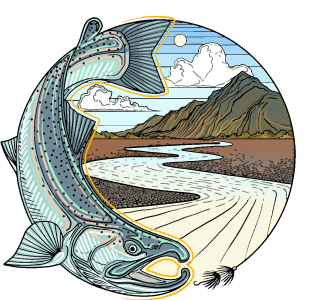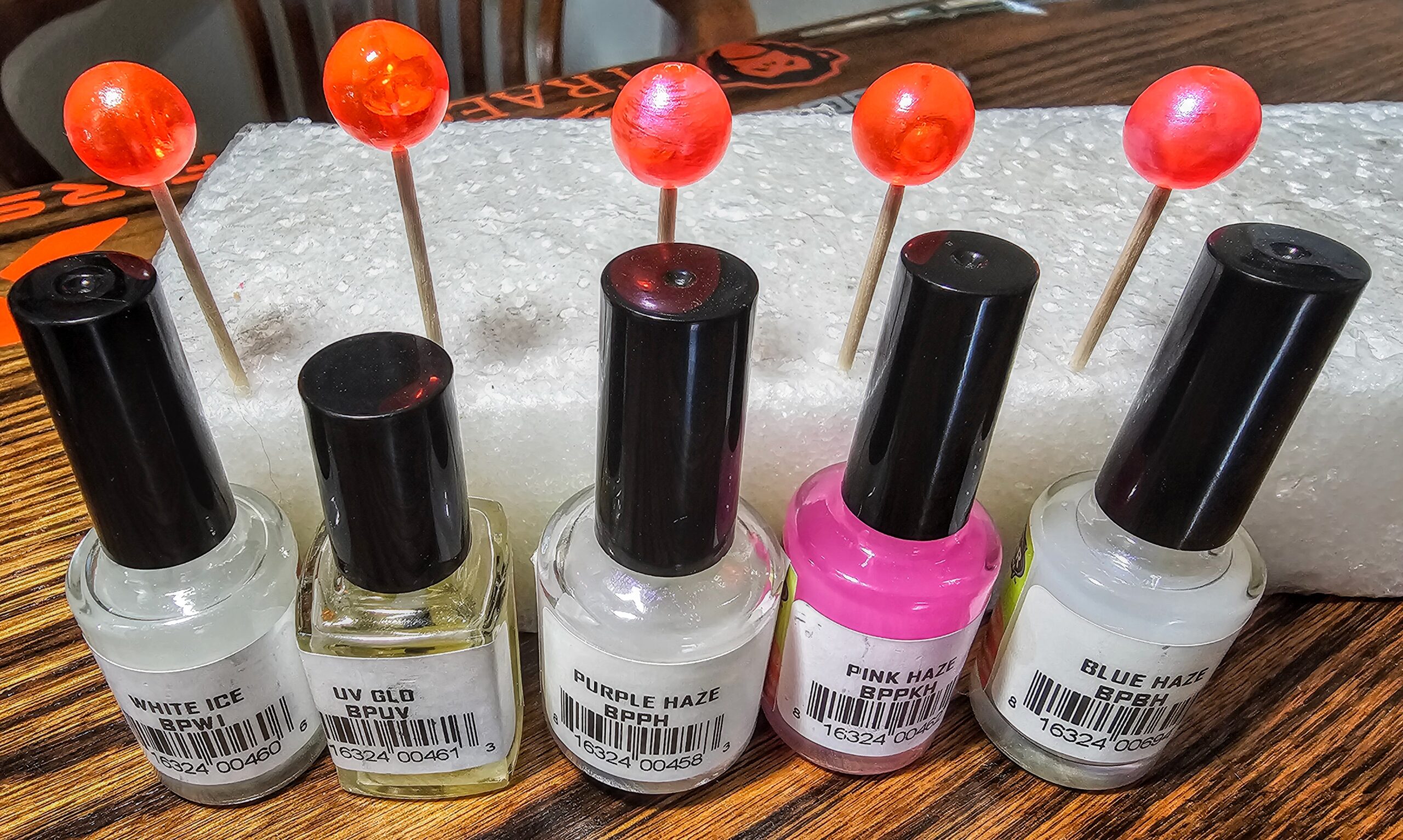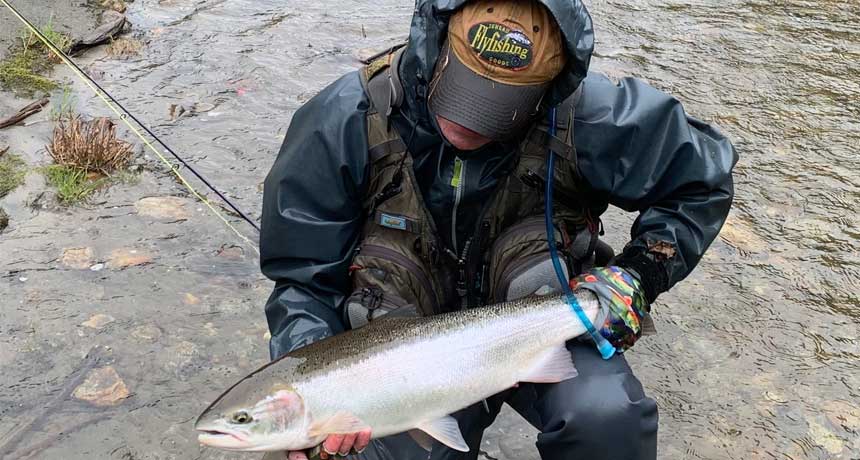
Why Go?
If we had to pick a dream river to fly fish for steelhead, it would be the Situk river in southeast Alaska. Here are the main reasons why you should go:
- Consistent runs of wild steelhead
- Lots of small wadable water
- Great for all angling abilities
- Guided or unguided/DIY
- Float or hike-in
- Can use multiple fly fishing techniques (nymphing, swinging, and beading)
- Easy to access remote and wild fishery
- Landing multiple fish per day is common, not a rarity
- Relatively inexpensive
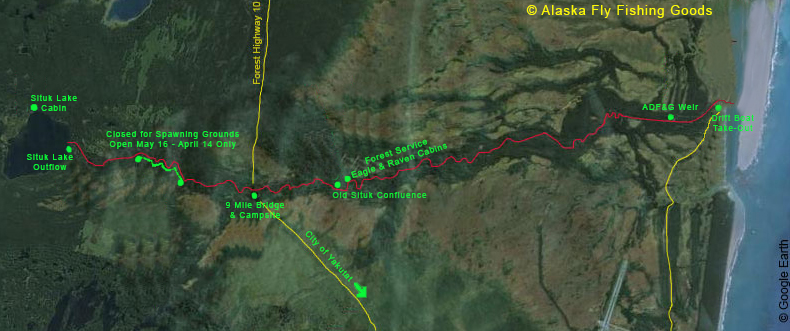
When To Go & How To Get There
The Situk gets two runs of wild steelhead, one in the spring and the other in the fall/winter. The spring is the most popular and productive time to fish because it has a larger return of fish and longer and "warmer" days on the water. The spring run typically begins mid March, really picks up speed the last week of April and tapers off by mid to late May. You can check the Alaska Department of Fish and Game weir fish count data online to help plan your trip timing.
The fall fish start trickling into the river late October-early November and taper off in December before they overwinter in Situk lake and then drop back into the river to spawn in the spring. With fast diminishing daylight hours and extremely unpredictable foul weather conditions the fall run sees very little angling pressure.
Getting to the Situk is easy which makes it a great 3-4 day trip option for anglers traveling from the west coast, or other regions of Alaska. Alaska Airlines offers commercial flight service to/from Yakutat and Seattle or Anchorage. The flight between Seattle and Yakutat is roughly 3 hours, and from Anchorage to Yakutat it's a short 1.5 hour flight.
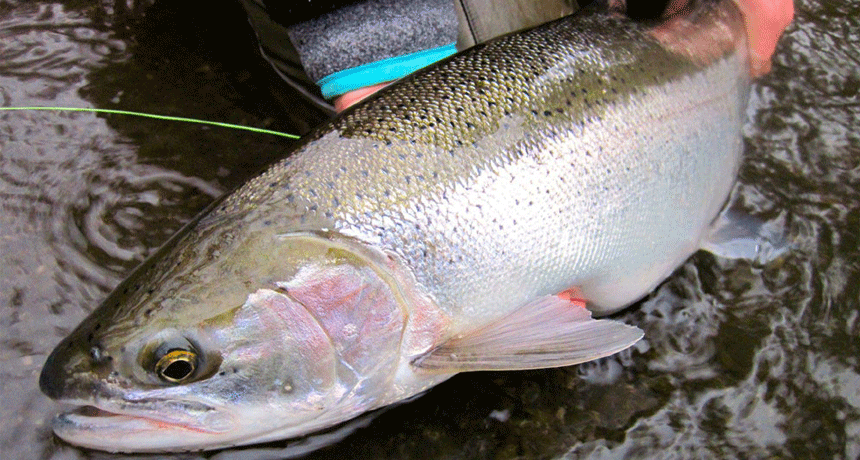
Fishing Access Options
Compared to most west coast steelhead rivers the Situk is relatively small, easy flowing water with lots of overhanging structure, log jam filled runs, and shallow depths. The river averages about 90 feet wide and 3 feet deep, with some deeper holes in the 12 foot range. It is an entirely wadeable river from it's upper and lower access points but a large number of anglers choose to float it to gain easier access to the harder to reach middle sections of the river. The various options to access and fish the river are outlined below.

Option #2: Multi-Day Float with Overnight Camping
For those seeking maximum time on the water and the most solitude you can float the river over the span of multiple days by camping or staying in public use cabins along the river. This option requires the most advance planning since you will need to bring your own camping supplies/equipment on top of figuring out whether to rent or bring a boat and navigating the logistics of getting your gear to/from the river. However, the reward for the extra planning and packing is the ability to fish remote sections of the river uninterrupted before and after the fleet of boats pass through.
The U.S. Forest Service has two public use cabins to rent, Eagle Cabin and Raven Cabin. The cabins are located about 3.5 miles downriver from the 9 mile bridge. You can book the cabins online up to six (6) months in advance. These cabins are in high demand and book up quickly for the April-May steelhead season so be sure to plan ahead.
Alternatively, you can bring your own tent and supplies and find a safe places to camp along the river as you fish your way downstream. Pitching a tent on Forest Service land is free and we strongly advise packing out what you pack in and storing food in bear canisters to keep it safe at night. If you decide to camp be prepared to do so in variable conditions and foul weather.
If floating is not in your plans, the Situk river has great foot access up and down river from the 9 mile bridge and upriver from the tidewater take-out. Hiking in is a solid option for anglers looking for easily accessible fishing, like to fish the water slow and enjoy exploring the surrounding forest.
You can access the upper stretches of the Situk by hiking the semi-maintained trail from the 9 mile bridge upstream to Situk Lake and fishing your way back downstream. There is a stretch of river about 2 miles up from the 9 Mile Bridge that is an active steelhead spawning area that is closed to fishing, be sure to check current fishing regulations and river maps to avoid this area. Be aware that fishing the Situk from the 9 mile bridge up involves traveling and fishing through some fairly rigorous terrain including snow covered trails, multiple river crossings and the endless navigating log jams.

Heading downriver from the 9 mile bridge there is a 3.5 mile long trail that leads to the Eagle and Raven cabins with decent access to wade the river. The nature of the river down from the 9 mile bridge is entirely different from that above the 9 mile bridge. There are long stretches of fast riffles that don’t hold fish followed by small pockets of steelhead. Much of the trail is on a steep hill side 20-50 feet above the river so scampering up and down is frequent. The water begins to deepen and become slightly swifter, so crossing the river is done less frequently, and more carefully. When you do have access to the river from the trail, you are often fishing under alders, with less gravel bars to fish from. Fishing from the 9 mile bridge down to the Eagle and Raven cabins tends to be more difficult for anglers on foot, but the rewards can be great!

There is also a campground located at the 9 mile bridge, for anglers who prefer to set up a basecamp and walk and wade up and down river from there. The campground is run on a first come - first serve basis with 6 full campsite areas, one picnic area, and one outdoor toilet. The campsites are well designed for tent camping in soggy weather. They are equipped with a wood platform to keep you out of the mud and a framework for hanging tarps over your tent and cooking area.

The other major access point for anglers on foot is to drive to the tidewater boat take-out and walk up river and fish from there. There's a rough trail following the river with off shoots to step into the river to fish. The farther up river you go the trail becomes less obvious and river crossing become more tricky. From the take-out you are close to the mouth of the Situk at this point, so the water is wider, and reading it becomes a bit more difficult. It can be excellent fishing on this stretch if you get lucky enough to encounter a batch of fresh steelhead charging into the river on an incoming tide. These fish are chrome bright and can often be more aggressive than fish that you find upstream.

Southeast Alaska's Ever Changing Weather
One thing that the Situk has in common with every other notable steelhead venue in the Pacific Northwest is the weather. Like many of the legendary steelhead rivers when the fishing is good, the weather usually isn't. Regardless of time of the season it's very possible to get rained on, snowed on, hailed on, have sun on your face all in the same hour. To say the least, the weather is variable and regardless of how you fish the river you need to be prepared for it. It's vitally important to dress in synthetic layers and carry a few extra warm and dry items to switch out, if needed. We highly recommend bringing two gore-tex and/or waterproof jackets so you can switch between them in very wet conditions. Hand warmers, gloves, and warm hat are always good to hand on hand. Last we heard some outfitters rent propane heaters with their boat rentals, this is a true luxury on the really cold and wet days.
Something else to consider before you get on the plane to Yakutat is to check snow levels and be sure the road to 9 mile bridge is open and clear of snow. The Yakutat area often gets a lot of snow and access to the bridge is not possible until the road crews get to plowing it. If you go early this is something to absolutely check on prior to departure.
Gear & Tackle
To effectively fish the Situk you will need to bring a variety of different gear including nymphs, beads, and streamers in assorted weights, sizes, and colors. The river can easily be fished with a 6 to 8 weight single hand rod, single hand spey rod, or short switch two-hand rod; floating or sinking line; dead drifting nymphs/beads or by swinging or stripping streamers. One of the most important things to consider when selecting gear for your trip is the river flow. If the water is running high, you will want to bring extra split shot, a fast sink tip line and heavy flies. If the water levels are low, you will want to bring smaller flies or beads, with nymphing in mind.
We put together a list of our favorite flies & beads and recommended tackle for a typical 3-4 day trip to the Situk. You can adjust the quantities based on your trip length and propensity to loose flies. In general, the Situk is a rather "woody" river that eats up gear so be sure to bring more than you think you will use. Click button below to view the full list.
If you have any questions about planning a trip to fish for steelhead on the Situk river, or any other place in Alaska, feel free to contact us or call the shop at 907-586-1550.

